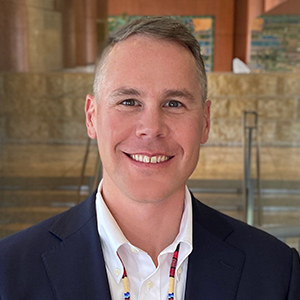The COVID-19 pandemic has led to economic and health hardships throughout Indian Country, affecting the many small businesses that are the backbone of tribal economies. To understand how these businesses are experiencing the pandemic, the Center for Indian Country Development (CICD) at the Federal Reserve Bank of Minneapolis partnered with the National Center for American Indian Enterprise Development (NCAIED) in mid-July 2020 to survey private sector businesses in Indian Country, receiving complete responses from 400 business owners.1
Two-thirds of businesses see significant revenue losses
Respondents have already experienced dramatic declines in their revenues and do not expect those declines to be reversed in the next six months. About 68 percent of businesses have seen at least a 20 percent revenue reduction. For comparison, a previous CICD survey in late April of businesses owned by tribal governments (rather than by individuals) found that more than 80 percent of tribally owned enterprises experienced revenue losses, with nearly one-quarter reporting zero revenue.
However, COVID-19 has affected some Indian Country businesses more than others. Fully four months after the pandemic and associated public health measures forced many businesses to suspend operations, 1 in 6 businesses reports having lost all of its revenue (as of mid-July) because of COVID-19. Many surveyed businesses (18 percent) reported working in industries such as arts, entertainment, and recreation that were especially affected by the pandemic.
On the other end of the spectrum, as seen in Figure 1, 18 percent of businesses report no COVID-19 impact on their revenues.2 As in the broader economy, some tribal businesses are more pandemic-resilient, whether because they can serve customers remotely, they serve as federal contractors, or their products remain in high demand despite the risks of in-person interaction.
Most businesses have avoided layoffs (for now)
Given the large revenue losses suffered by the large majority of tribal businesses, it may be surprising that layoffs have been less common. As seen in Figure 2, of the surveyed businesses, 59 percent have not yet laid off or furloughed anyone, and about the same share report that they expect no layoffs or furloughs in the next six months. The close relationships between employees and business owners that are common in Indian Country may be part of the explanation.
However, nearly one-third of surveyed tribal business owners have already laid off or furloughed roughly half or more of their employees. Though it is certainly possible that many of these workers will eventually be rehired, the business owners themselves expect a similar situation in the next six months, with 28 percent expecting to have roughly half or more of their employees on layoff by the end of that time period. For comparison, the earlier CICD survey found that as of late April, more than half of tribal governments and tribally owned enterprises had laid off or furloughed some of their employees.
The Paycheck Protection Program (PPP), among other policy supports for employment during the COVID-19 pandemic, likely contributed to the retention of some workers for businesses that received a PPP loan. However, as seen in Figure 3, only 36 percent of respondents applied for a PPP loan and 61 percent of those applicants—22 percent of all respondents—received one. Many businesses faced challenges in accessing credit: only 1 in 3 survey respondents reported having a strong or very strong relationship with their lender prior to the pandemic. While additional research is needed to understand the extent to which tribal businesses accessed and are benefiting from the PPP, survey results underscore the initial concerns that the PPP may have challenges in reaching Indian Country.
Normalcy remains far off
When asked how long they expect it will take for their business to return to its pre-pandemic level of activity, tribal business owners express considerable pessimism. See Figure 4. Only 16 percent say that their business never left its normal level, has already returned to its normal level, or will return to the norm within three months. Nearly half, 48 percent, expect that it will take more than six months to return to normal operations, and more than a quarter expect that their business will effectively never return to its pre-pandemic baseline. Similarly worrisome was the finding (not shown) that only 20 percent say they have enough cash on hand, which includes financial assistance and loans, for more than three months of operations.
Some Indian Country businesses are successfully managing pandemic-related disruptions amidst the disproportionate economic hardships and health impacts of COVID-19 on Native Americans. Their focus on retaining employees and providing their services and products will be critical to economic recovery in the tribal private sector. While this survey saw disproportionately strong participation (57 percent of all respondents) from businesses in the Northwest and Rocky Mountain regions, its results add to our picture of how COVID-19 is affecting all tribal communities and the economic engines that Indian Country residents rely on for their livelihoods and for basic goods and services. With many business owners in Indian Country anticipating that conditions will never return to normal, and cash reserves rapidly being depleted, employees and the tribal small business community face stiff headwinds.
Authors’ note: We are grateful to Tyler Boesch for excellent research assistance and to James Colombe for his insights regarding the design of the survey. Additionally, we are grateful to Native American organizations around the country that shared the survey with their communities.
Endnotes
1 While the vast majority of these responses represented privately owned businesses, a small portion—6 percent—were from businesses that are tribally owned.
2 For this figure and others with the same response options, a typo in the questionnaire mislabeled the “40% to 60%” category as “50% to 60%.” We believe that, in context, respondents interpreted the question as referring to “40% to 60%” but acknowledge the possibility of some additional error across adjacent response categories.
Casey Lozar is a Minneapolis Fed vice president and director of our Center for Indian Country Development, a research and policy institute that works to advance the economic self-determination and prosperity of Native nations and Indigenous communities. Casey is an enrolled member of the Confederated Salish and Kootenai Tribes and he’s based at our Helena, Mont., Branch.









